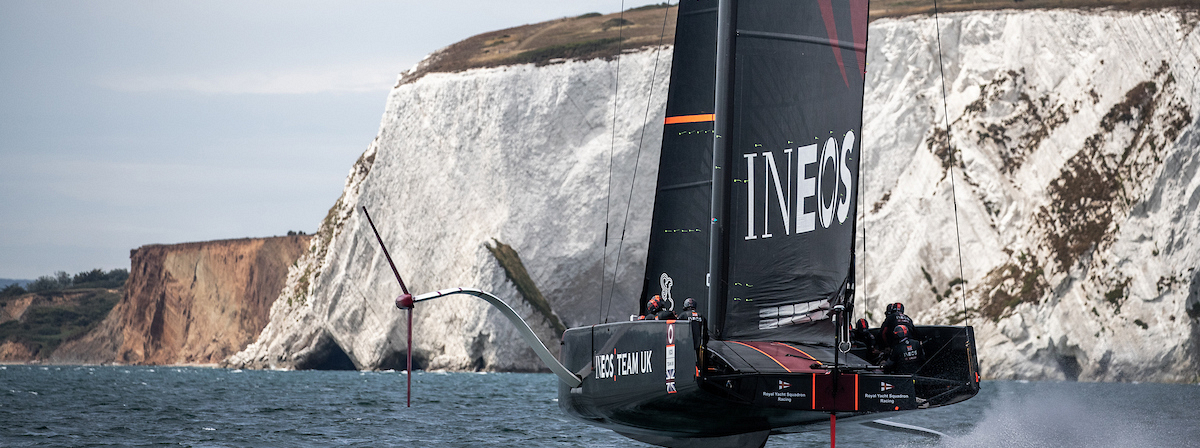Sir Robin Knox-Johnston learns to fly on Britannia
27 July 2020
I am not sure whether my burning face is due to the sun, the wind, or the high pressure blasts of water over the gunwale as the foil went down my side to indicate the start of a tack or a gybe, but it certainly hurt, more like the spindrift in the Roaring Forties than anything else I have experienced. It was fortunate that only my head was above the bulwark, as that pressure hitting my well protected body would have thrust me aft and overside.
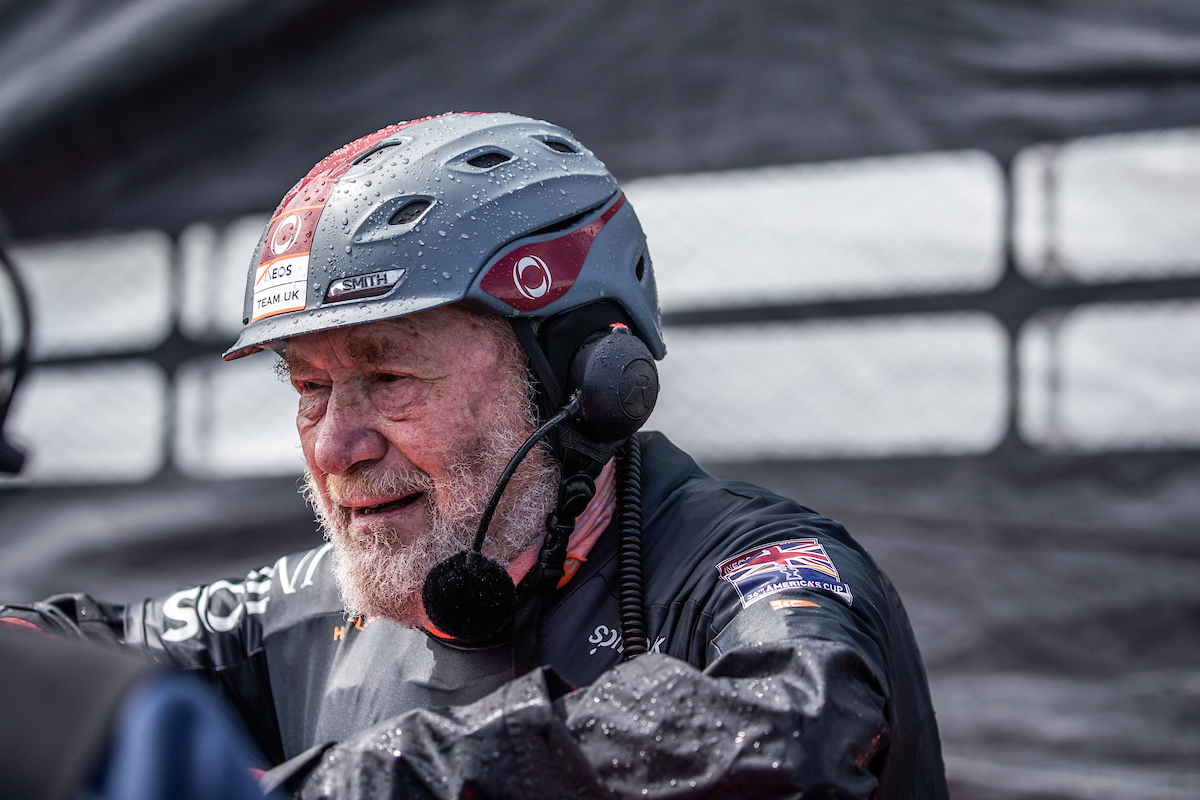
Photos all by C Gregory
This is not sailing as we used to know it. This machine, appropriately named Britannia, sponsored by INEOS and skippered and managed by Britain’s top Olympian Ben Ainslie, flies on foils each side, the leeward one down, the windward one up. There is no keel, reducing the friction and holding the mast upright. As a result the speeds are incredible. I have sailed some fast multihulls in my time, but never exceeded 32 knots non surfing speeds, but here we just accelerated up and away. Interestingly, despite the lack of a keel, she points up to wind very well.
The boat is open, but with two channels each side where the grinders and controls are housed. Dry suits are essential. I was standing aft on the port side, out of the way and instructed to hold onto a safety bar in front of me. The advice was very relevant as the moment we started to move the acceleration is more that of a car being revved up than any boat I have ever sailed upon. I became aware of my knuckles after a while as they were hurting and white from gripping that bar. Tacking was another new experience. I am not sure what the G forces were but the sideways thrust on my body was considerable.
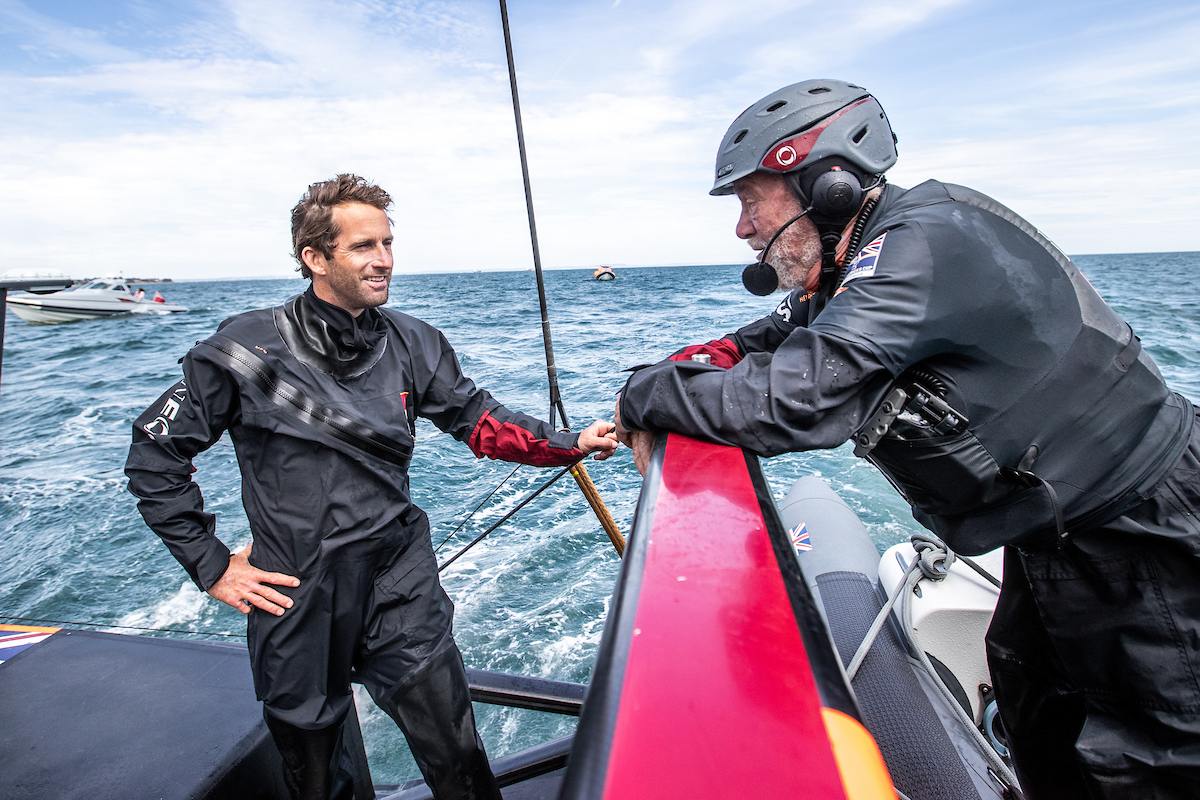
Getting the hull out of the water happens very quickly and then it is a question of trim, but not just of the sails, the foils have to be adapted to allow the hull to rise from the water to suit the conditions as well. This uses a system which was explained to me but appears to owe more to black magic than anything else. However it is achieved, the boat only fell off once.
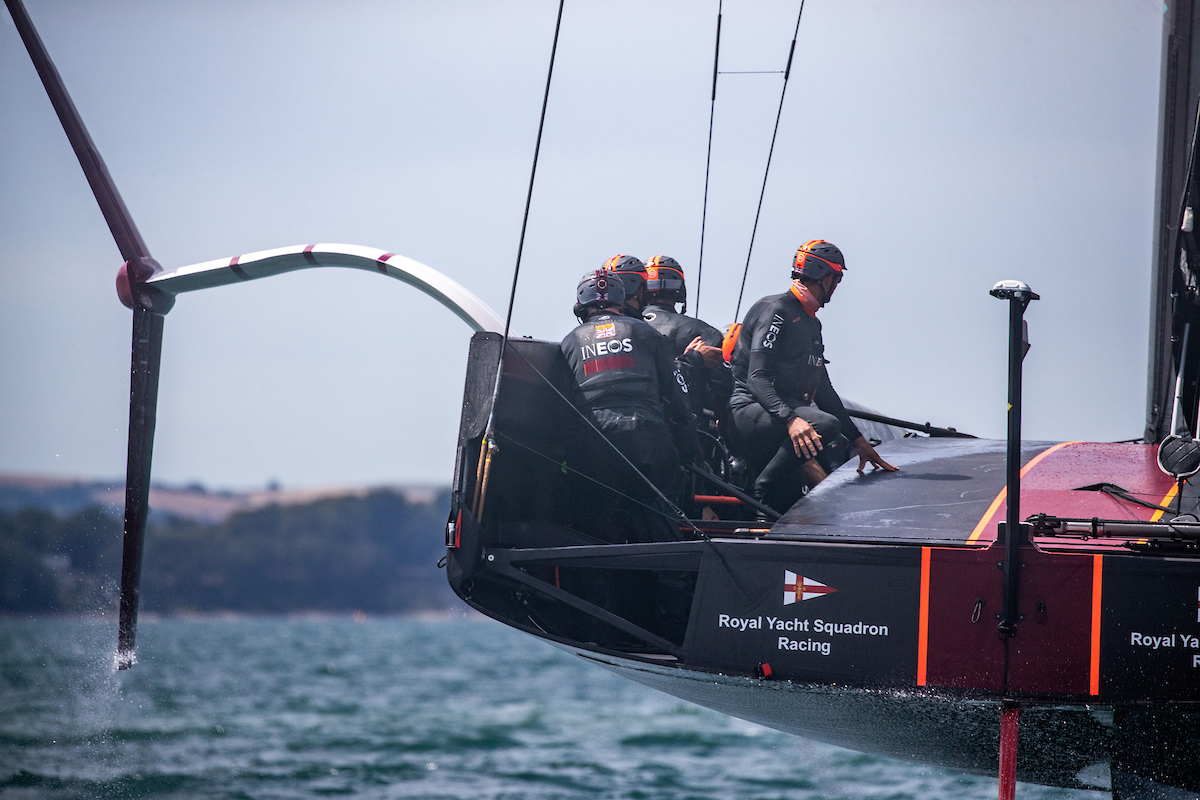
At this stage in the development the time afloat is spent tuning. But not the sort of tuning with which we are familiar. There is no adjusting rigging to keep the mast straight with a bend to suit conditions, this tuning is done by a battery of computers and the daily results taken away and painstakingly analysed. As we swept up and down the anchorage, there was constant chatter in the speaker in my very necessary safety helmet to make small adjustments to get a better performance, and this will go on even when the actual races take place next year in Auckland, New Zealand.
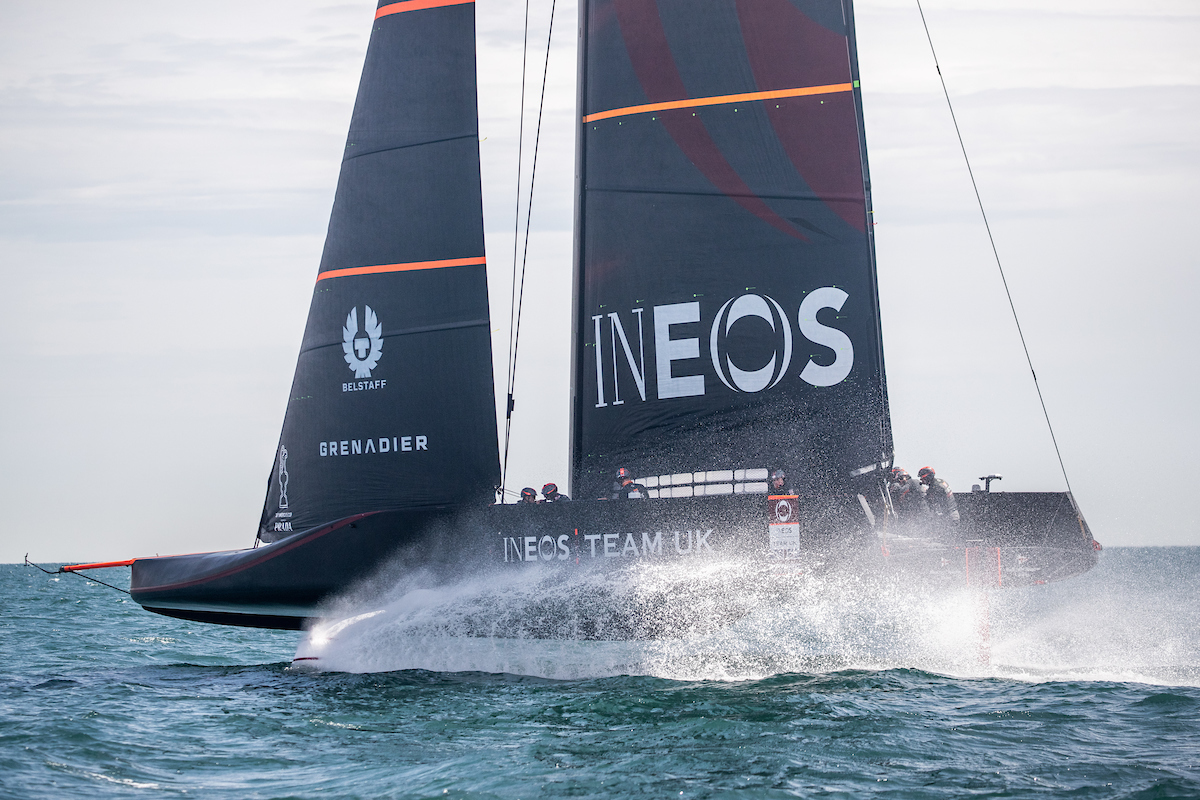
We only hit a maximum of 42 knots (only!) off the east coast of the Isle of Wight in choppy conditions which the craft floated above comfortably. There was more power in the bag if required, but high speeds were not the objective this day. This was a learning sail in the new America’s Cup class and it is exhilarating to be aboard, even if just as a passenger, watching admiringly as the crew expertly handled this incredibly powerful and complex machine.
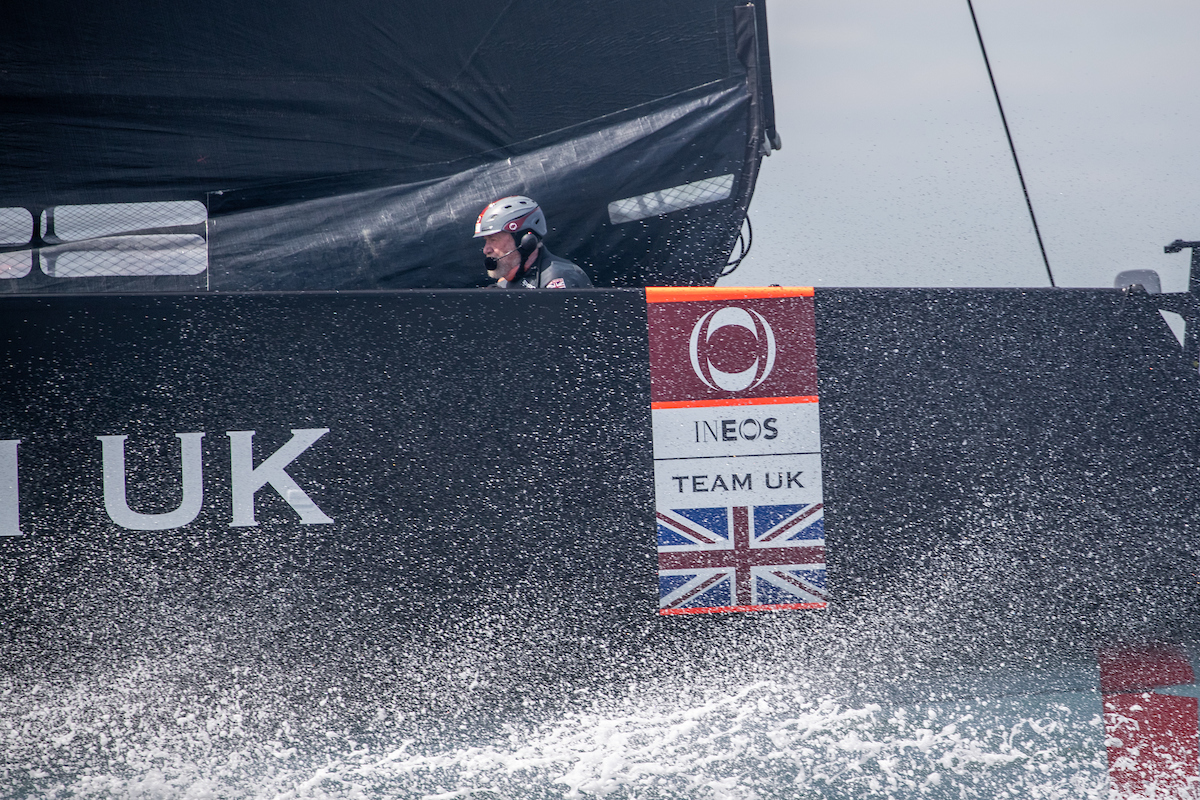
How will the next boat, developed from Britannia and currently in build fare against her three opponents for the “Auld Mug” next year, well no one knows which just adds to the interest. It may not be type the sailing I grew up with, but sailing it certainly is, but at yet another higher level in the development of our sport. I am a convert and could only wish it had happened 50 years earlier!
Thanks Ben and INEOS Team UK for a wonderful and stimulating experience.
24th July 2020 - a day to remember.
Join The Race